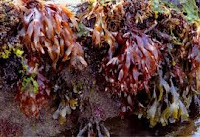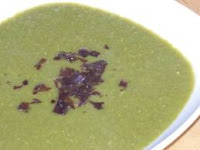The mangel-wurzel conjures up images of country bumpkins with a broad West Country accent in the popular British imagination. I always thought it was some kind of swede, but it seems others believed it was a large type of turnip none of these is correct, however, as it is a type of beet, though not quite like the red beetroot or sugar beet.
It is not just these misconceptions that have surrounded the mangel-wurzel; another is about its name. Culpeper refers to it as the “root of scarcity”, drily commenting that it is found in abundance. This name comes from a confusion with the German, from which “mangel-wurzel” comes. Mangel does indeed mean scarcity, but that is a corruption of the German words Mangold, meaning beetroot with wurzel meaning root. It is mainly grown as animal fodder but we can eat the young, small mangel-wurzels which can be cooked like beetroot or turnips, or for that matter any other root vegetable.
The leaves, like those of beetroot are particularly good for nutrition as they contain iron and vitamin C- another antiscorbutic in the same way as spinach, scurvy-grass and samphire are. They have been used as a blood purifier and for their diuretic properties.
Of course these vegetables have a place in English literature, and Somerset Maugham epitomizes the popular belief about them in “Of Human Bondage” when this is said, clearly showing that a “townie” does not fit in with rural life:-
‘“I can see you in the country,” she answered with good-natured scorn, “Why, the first rainy day or hard winter you’d be crying for London.” She turned to Philip, “Athelny’s always like this when we come down here. Country! I like that! Why he doesn’t know a swede from a mangel-wurzel.”’
Some proponents of the vegetable, in the 18th century said that its taste “exceeds spinach” and that the larger leaves and stems “eat like asparagus.”
George Orwell in “Animal Farm” (1945) mentions them in the Song of the Beasts as being “Riches more than mind can picture” for the animals. The picture here of sheep on a mountain of mangel-wurzels rather bears this out!
In some parts of Britain they are hollowed out into Jack-o-Lanterns like pumpkins are and carried around by children on the third Thursday of October- then of course they can be used again for Halloween.
In North Wiltshire there is an ancient game played with them, with the biggest being placed at a little distance away from the competitors (called the Norman) with smaller ones being thrown at it to topple it. This game must date back to the 11th century when the Normans defeated the English at the Battle of Hastings in 1066. The Normans were not much liked by the English so perhaps this is when this game originated.
 Nicholas Culpeper the English herbalist writing in the 17th century says that the root had been fairly recently introduced from Germany in his day, and praises it as animal fodder and as food for humans. This is what a little of what he writes about it:-
Nicholas Culpeper the English herbalist writing in the 17th century says that the root had been fairly recently introduced from Germany in his day, and praises it as animal fodder and as food for humans. This is what a little of what he writes about it:- This most valuable root is not affected by the vicissitude of the seasons, and has no destructive enemy; the insects, and vermin, which make ravages on all other kinds of vegetables, neither touch nor injure it. It is not attacked by blasting or mildew, and the greatest draught does not affect its vegetation; it does not injure the soil that nourishes it, but prepares it to receive, before the winter, the corn and other seeds which may be intended to be deposited in it.”
He was clearly very much in favour of it, although he does not ascribe any medicinal properties to it.






























